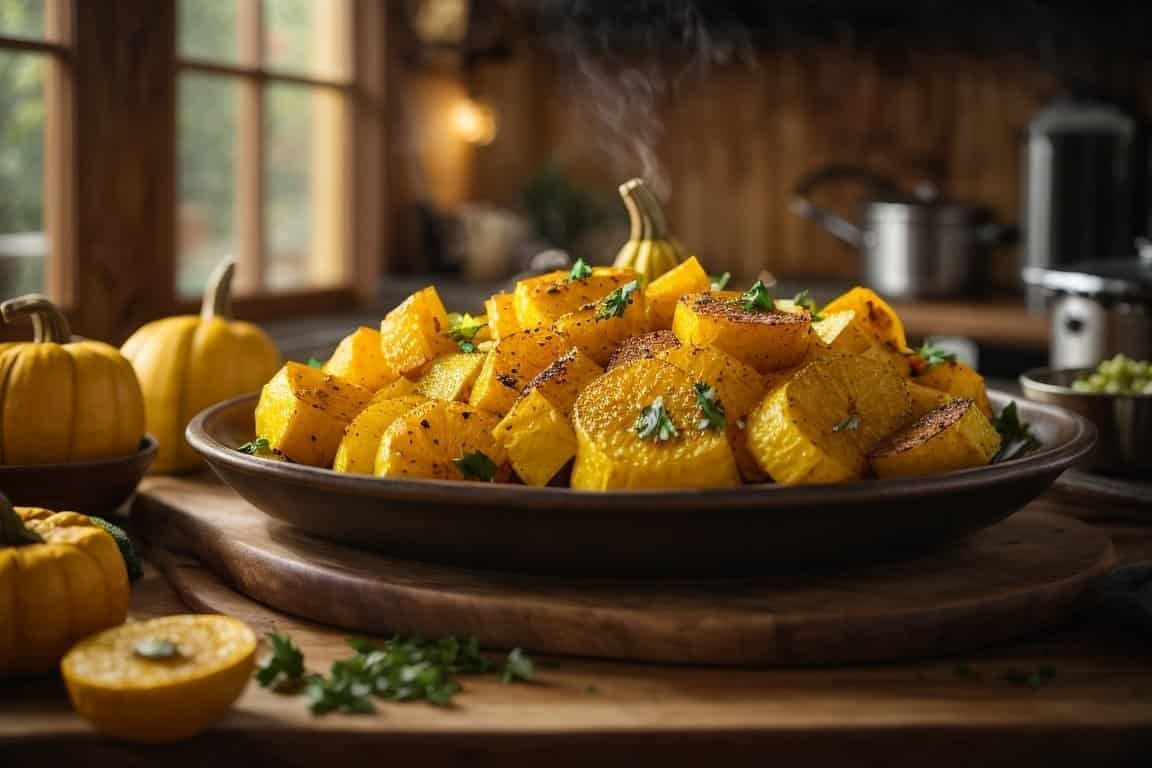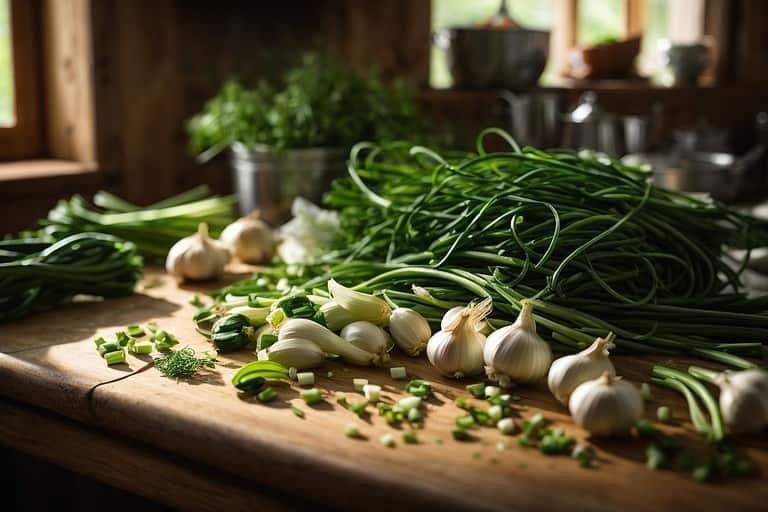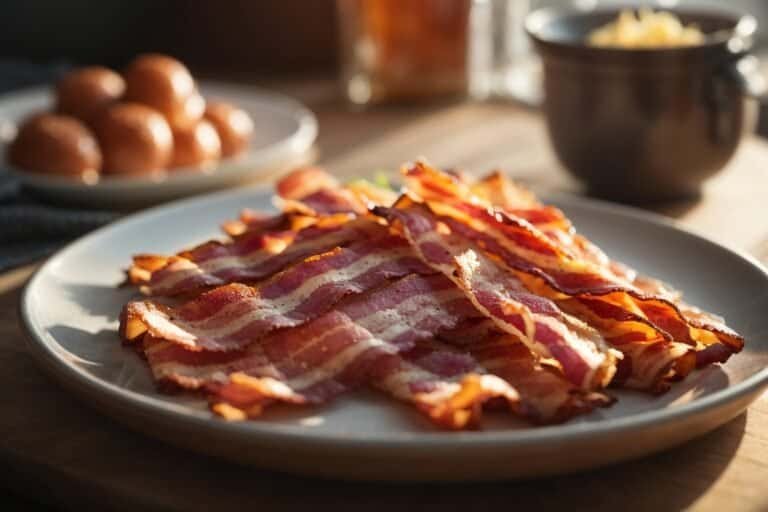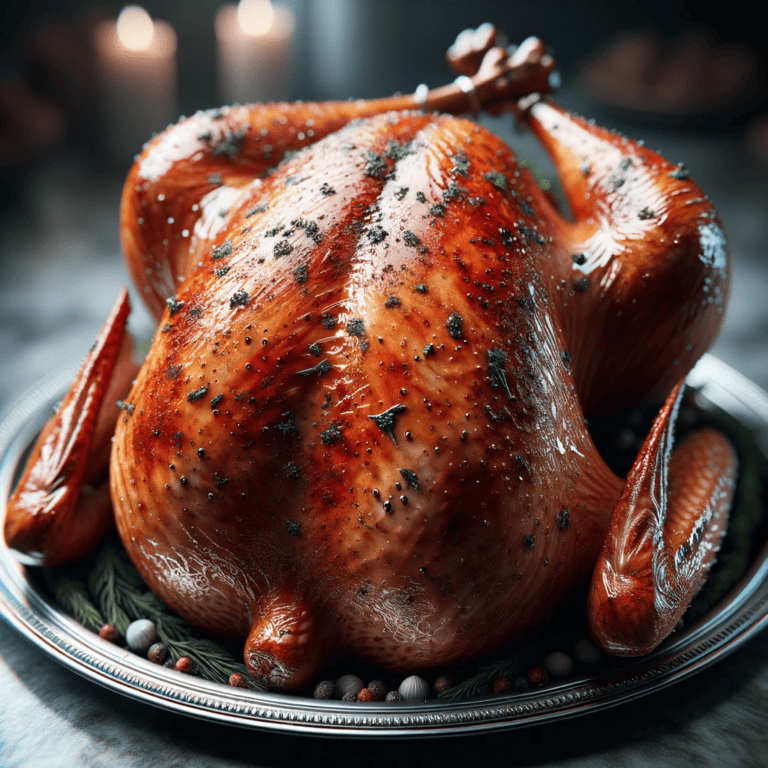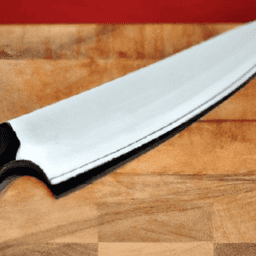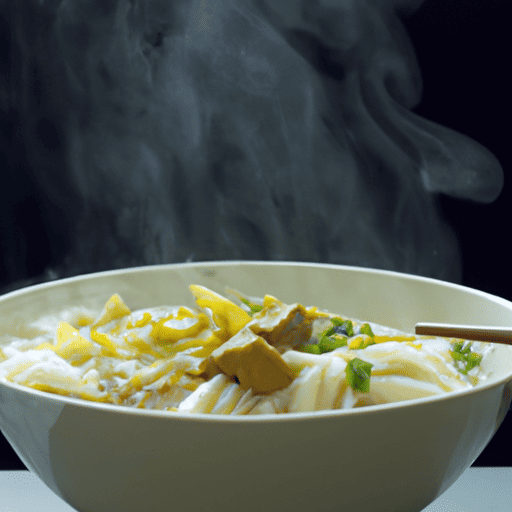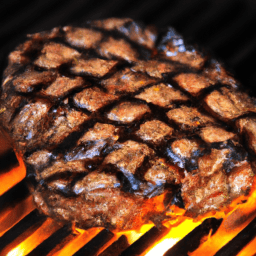How To Cook Yellow Squash with Flair and Flavor
You culinary renegades tired of the same, uninspiring kitchen routines—this one’s for you. How to cook yellow squash? You might think it’s just another bland vegetable, but you’re about to embark on a culinary journey that will give your taste buds a swift kick in the pants.
We’re taking this underappreciated gem from the produce aisle and transforming it into a symphony of flavors. Roasted, sautéed, or grilled—I’m going to guide you through the alchemy that will make yellow squash the star of your dining table.
So forget your grandma’s guide to cooking; this is a rebel’s manifesto on making something extraordinary out of the ordinary. Welcome to flavor country, folks.
Understanding Yellow Squash
Yellow squash is a popular vegetable that belongs to the Cucurbitaceae family, which also includes other varieties of squash and cucumbers. It is characterized by its vibrant yellow color and mild flavor. Yellow squash is known for its high nutritional value and numerous health benefits. In this article, we will explore the definition of yellow squash, its origin and history, and the varieties available.
Definition of Yellow Squash
Yellow squash refers to the edible fruit of various Cucurbita pepo cultivars. It is a summer squash, which means it is harvested before reaching full maturity. The skin of yellow squash is smooth and thin, and its flesh is tender and succulent. This versatile vegetable can be used in a variety of culinary preparations, such as boiling, grilling, steaming, roasting, baking, and more.
Origin and History of Yellow Squash
Yellow squash has a rich history that dates back to ancient times. It is believed to have originated in Central America, where it was cultivated by the native people. Squash seeds were later brought to North America by European settlers, and yellow squash gradually gained popularity in the United States. It is widely grown and consumed in many parts of the world today.
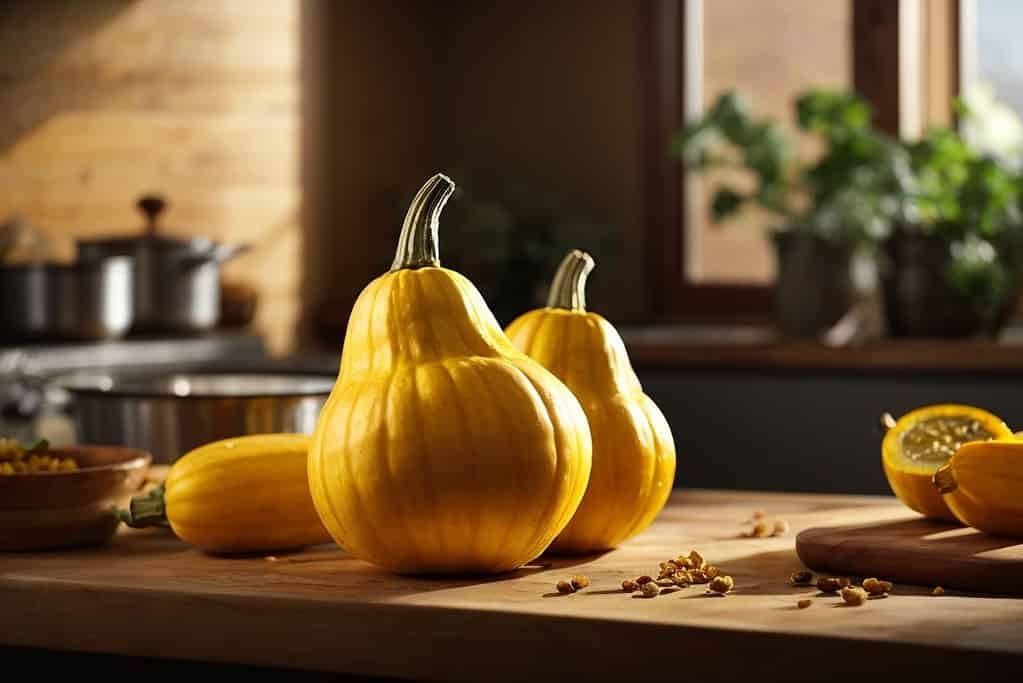
Different Varieties of Yellow Squash
There are several varieties of yellow squash, each with its own unique characteristics. The most common types include straight neck, crook neck, and scallop squash. Straightneck squash is characterized by its elongated shape and smooth, straight neck. Crookneck squash, on the other hand, has a curved neck and bumpy, yellow skin. Scalloped squash, also known as pattypan squash, has a round shape with scalloped edges. Each variety has its own flavor profile and can be used interchangeably in recipes.
Nutritional Value of Yellow Squash
Yellow squash is delicious and packed with essential nutrients that are beneficial for your health. It is low in calories and fat, making it an excellent choice for those looking to maintain a healthy weight. Yellow squash is also a good source of vitamins, minerals, and dietary fiber.
Nutrients Present in Yellow Squash
Yellow squash is rich in vitamins A and C, which are important for maintaining healthy skin, boosting the immune system, and promoting good eye health. It also contains significant amounts of potassium, magnesium, and folate, which play a crucial role in regulating blood pressure, supporting bone health, and aiding in cell division and growth. Furthermore, yellow squash is a good source of antioxidants, such as beta-carotene and lutein, which help protect the body against oxidative stress and inflammation.
Health Benefits of Yellow Squash
In addition to its nutritional content, yellow squash offers numerous health benefits. Consuming yellow squash regularly can contribute to a healthy digestive system, as it is high in dietary fiber. Fiber helps promote regular bowel movements, prevents constipation, and supports gut health. Yellow squash is also known to have anti-inflammatory properties, which can help reduce the risk of chronic diseases, such as heart disease and certain types of cancer. Furthermore, the antioxidants present in yellow squash may help protect against age-related macular degeneration and other eye conditions.
Possible Allergies and Side Effects
While yellow squash is generally safe to consume, some individuals may be allergic to it. Allergic reactions to squash are rare but can occur in people with allergies to other members of the Cucurbitaceae family, such as cucumbers and melons. Symptoms of an allergic reaction may include itching, swelling, hives, or difficulty breathing. If you experience any allergic symptoms after consuming yellow squash, it is necessary to seek medical attention.
As with any food, it is important to practice moderation when consuming yellow squash. Eating excessive amounts of this vegetable may lead to bloating or gastrointestinal discomfort due to its high fiber content. If you have any underlying medical conditions or concerns, it is advisable to consult with a healthcare professional before making any significant dietary changes.
Prepping Yellow Squash for Cooking
Before diving into the various cooking methods for yellow squash, it is essential to properly prepare this versatile vegetable. Here are the steps to select, wash, and cut yellow squash for cooking.
Selecting the Perfect Yellow Squash
When selecting yellow squash, look for ones that are firm, with smooth skin and vibrant color. Avoid squash that has any soft spots, bruises, or blemishes. The size of the squash is a matter of personal preference, but smaller ones tend to be more tender and flavorful. Choosing organic yellow squash whenever possible is recommended to minimize exposure to synthetic pesticides.
Washing and Cleaning the Squash
Before cooking, washing the yellow squash thoroughly is crucial to remove any dirt or debris on the skin. Start by rinsing the squash under cool running water, and gently rubbing the surface with your hands to ensure all dirt is removed. You can also use a vegetable brush to scrub away any stubborn residues. Once cleaned, pat the squash dry with a clean kitchen towel or paper towel.
Properly Cutting and Dicing the Squash
Depending on the cooking method you plan to use, the yellow squash can be sliced, diced, or cut into different shapes. To prepare the squash for slicing, trim off the stem and the blossom end using a sharp knife. Then, depending on the desired thickness, slice the squash into even rounds or half-moons. If you prefer diced squash, cut the slices into small cubes. It is important to maintain consistency in the size of the pieces to ensure even cooking.
Simple Boiling Method
Boiling yellow squash is a straightforward cooking method that results in tender and flavorful squash. Here is a step-by-step guide on how to boil yellow squash.
Preparation of the Squash Before Boiling
Prepare the yellow squash by washing, cleaning, and cutting it into your desired shape. Cutting the squash into uniform slices or cubes for boiling is best. Once the squash is prepped, bring a large pot of water to a rolling boil. You can add a pinch of salt to the water for seasoning, although this is optional.
Boiling Process of Yellow Squash
Once the water is boiling, carefully add the prepared yellow squash to the pot. Allow it to cook for about 5-7 minutes or until the squash becomes tender. Be careful not to overcook the squash, as it can become mushy and lose its vibrant color. To check for doneness, insert a fork or a knife into a piece of squash – it should easily glide through without resistance.
Ideas for Seasoning and Serving Boiled Squash
Boiled yellow squash can be enjoyed as a simple side dish or incorporated into a variety of recipes. For a basic yet flavorful option, sprinkle the cooked squash with a pinch of salt, freshly ground black pepper, and a drizzle of olive oil. To elevate the flavor, you can also add your favorite herbs and spices, such as garlic powder, dried oregano, or paprika. Additionally, boiled yellow squash can be tossed with pasta, added to stir-fries, or mixed into salads for a nutritious twist.
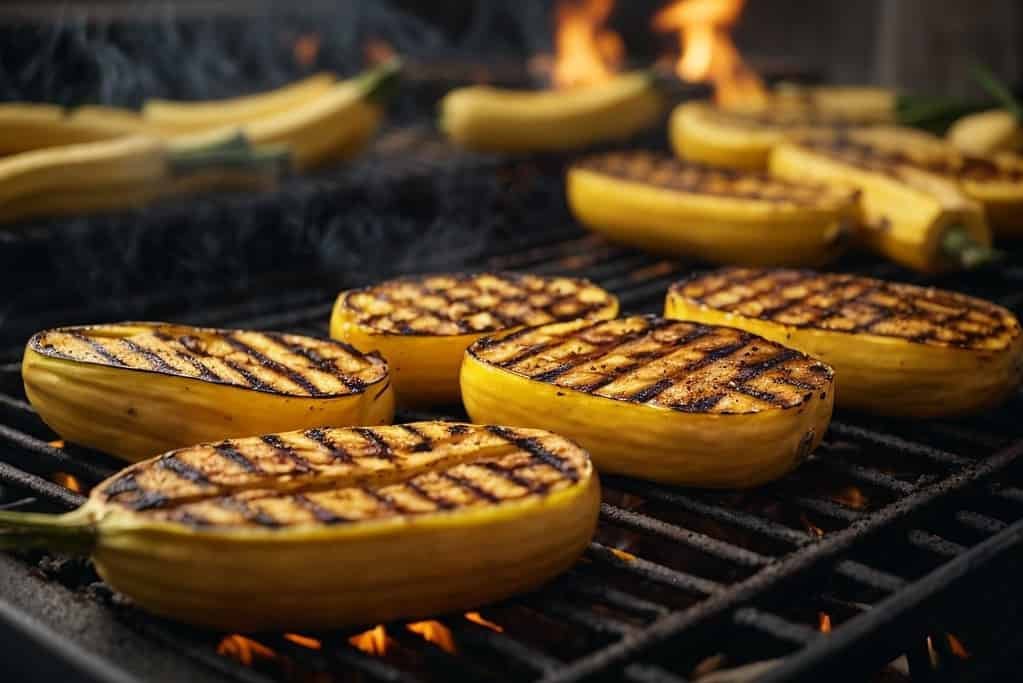
Delicious Grilling Method
Grilling yellow squash adds a smoky and charred flavor to this already delicious vegetable. Follow these steps to achieve perfectly grilled yellow squash.
Marinating the Yellow Squash for Grilling
Before grilling, marinating the yellow squash can enhance its flavor and texture. In a shallow dish or a zip-top bag, combine olive oil, freshly squeezed lemon juice, minced garlic, salt, pepper, and your choice of herbs, such as thyme or rosemary. Add the sliced or halved yellow squash to the marinade and allow it to sit for at least 30 minutes to absorb the flavors.
Grilling Process of Yellow Squash
Preheat your grill to medium-high heat. Remove the yellow squash from the marinade, shaking off any excess liquid. Place the squash slices or halves on the preheated grill and cook for about 3-4 minutes per side or until grill marks form and the squash is tender. Be careful not to overcook; it can become overly soft and lose shape. Once done, remove the grilled squash from the heat and allow it to cool slightly before serving.
Presentation and Serving Suggestions for Grilled Squash
Grilled yellow squash makes a beautiful and flavorful addition to any meal. You can serve it as a side dish alongside grilled meats or fish or incorporate it into vegetarian dishes, such as pasta salads or grain bowls. Garnish the grilled squash with freshly chopped herbs, such as parsley or basil, for an added burst of freshness. Additionally, you can drizzle a balsamic glaze or sprinkle grated Parmesan cheese on top for added depth of flavor.

Healthy Steaming Method
Steaming yellow squash is a gentle cooking method that helps to retain its nutrients and natural flavors. Here’s how to steam yellow squash to perfection.
Steaming Preparation for Yellow Squash
To steam yellow squash, start by washing and cutting it into your desired shape, such as slices or cubes. Fill a pot with about an inch of water and bring it to a simmer. Place a steamer basket or a colander on top of the pot, ensuring it does not touch the water. Arrange the yellow squash pieces in a single layer inside the steamer basket or colander.
Steaming Process of Yellow Squash
Once the water is simmering, cover the pot with a lid and allow the yellow squash to steam for approximately 4-6 minutes or until it is tender when pierced with a fork. Avoid lifting the lid during the steaming process, as this can cause steam to escape and increase the cooking time. Once cooked, remove the yellow squash from the steamer and set it aside to cool slightly before serving.
Dressing and Serving Steamed Squash
Steamed yellow squash can be enjoyed as a simple, nutritious side dish or used in a variety of recipes. Season the steamed squash with a sprinkle of salt, freshly ground black pepper, and a drizzle of extra virgin olive oil for a basic serving option. You can also toss it with a squeeze of lemon juice and a handful of fresh herbs, such as dill or chives, for added brightness. Steamed yellow squash works well as a topping for grilled chicken or fish or as a filling for wraps and sandwiches.
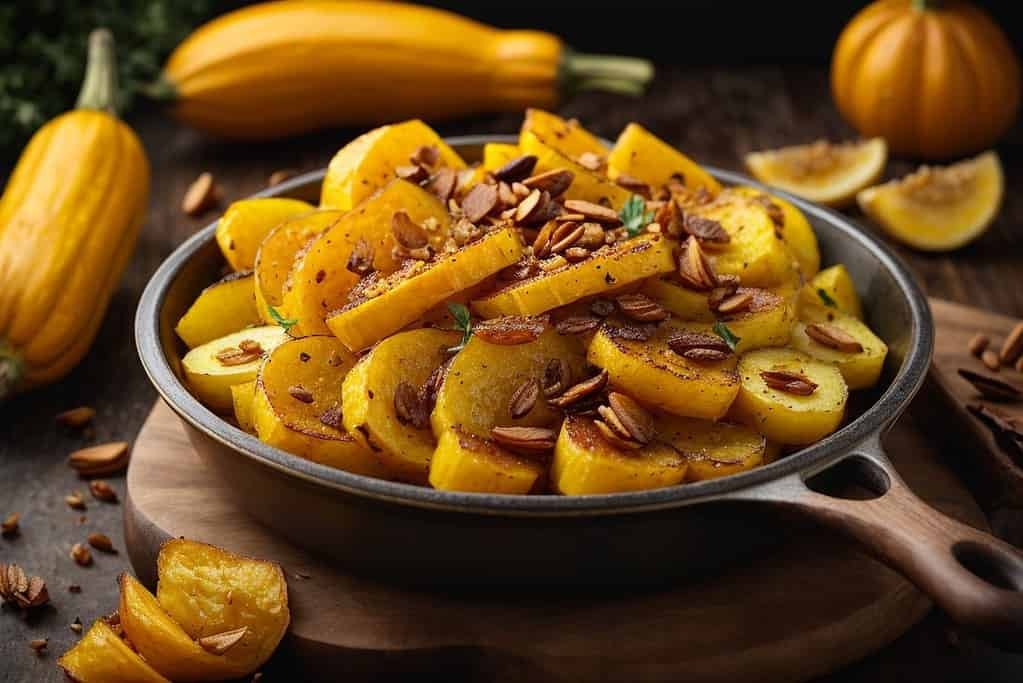
Pan Roasting Method
Pan-roasting yellow squash creates a delicious caramelized exterior while keeping the inside tender. Here is a step-by-step guide on how to pan-roast yellow squash.
Seasoning the Yellow Squash Before pan-roasting
To prepare the yellow squash for pan roasting, wash, clean, and cut it into slices or cubes, depending on your preference. Season the squash with salt, pepper, and your choice of herbs or spices. You can use a mixture of dried herbs, such as oregano, thyme, or rosemary, or experiment with different spice blends to suit your taste.
The Pan Roasting Process
Start by heating a skillet over medium heat and adding a small amount of olive oil or butter to prevent the squash from sticking. Once the oil is heated, carefully add the seasoned yellow squash to the pan. Allow the squash to cook without stirring for a few minutes to encourage caramelization. Then, using a spatula or tongs, flip the squash pieces and continue cooking until they are golden brown and tender. This process typically takes about 8-10 minutes, depending on the thickness of the squash.
Arranging and Serving Pan Roasted Squash
Pan-roasted yellow squash can be served as a flavorful side dish or used in various recipes. Arrange the cooked squash slices or cubes on a platter and garnish with freshly chopped herbs, such as parsley or cilantro, for added freshness. You can also sprinkle some grated Parmesan cheese or drizzle a balsamic glaze on top to elevate the flavor. Pan-roasted yellow squash pairs well with grilled meats or roasted chicken or can be added to pasta dishes and grain bowls for a satisfying meal.
Baking Method
Baking yellow squash is a simple way to create a tender and savory dish. Here’s how to bake yellow squash to perfection.
Getting the Yellow Squash Ready for Baking
Preheat your oven to 400°F (200°C) and prepare the yellow squash by washing, cleaning, and cutting it into slices or cubes. Place the prepared squash in a mixing bowl and drizzle with a generous amount of olive oil. Season with salt, pepper, garlic powder, and any other desired herbs or spices. Toss the squash gently to ensure it is evenly coated with the seasoning.
The Baking Process of Yellow Squash
Transfer the seasoned yellow squash onto a baking sheet lined with parchment paper or a silicone baking mat. Arrange the pieces in a single layer, ensuring they are not overlapping. Place the baking sheet in the preheated oven and bake for approximately 20-25 minutes or until the squash is tender and caramelized. Flipping the squash halfway through baking is advisable to ensure even browning. Once baked, remove the squash from the oven and allow it to cool slightly before serving.
Serving Suggestions for Baked Squash
Baked yellow squash can be served as a flavorful side dish or incorporated into various recipes. Arrange the caramelized squash on a serving platter and garnish with freshly chopped herbs, such as thyme or parsley. You can also crumble some feta cheese or sprinkle grated Parmesan over the top for added richness. Baked yellow squash pairs well with roasted meats, and grilled seafood or can be used as a filling for frittatas or quiches. Additionally, you can toss the baked squash with cooked pasta or lentils for a satisfying vegetarian meal.
Incorporating Yellow Squash in Other Dishes
Yellow squash is a versatile vegetable that can be used in various dishes to add flavor and nutrition. Here are some ideas for incorporating yellow squash into your favorite recipes.
Adding Yellow Squash to Salads
Including yellow squash in salads can provide a refreshing crunch and vibrant color. You can thinly slice or dice raw yellow squash and toss it with mixed greens, cherry tomatoes, cucumbers, and your favorite dressing. Alternatively, you can roast or grill the squash before adding it to the salad for a smoky flavor. Yellow squash’s mild and delicate taste pairs well with various salad ingredients, making it a versatile addition to any salad.
Including Yellow Squash in Casseroles
Yellow squash can be a delicious addition to casseroles, adding both flavor and texture. Slice or dice the squash and incorporate it into your favorite casserole recipes, such as a cheesy potato casserole or a vegetable medley casserole. It holds its shape well during cooking and adds a mild sweetness to the overall dish. Yellow squash can also be layered in lasagnas or baked ziti for a nutritious twist.
Mixing Yellow Squash into Stir-fries
Stir-fries are a quick and easy way to incorporate yellow squash into your meals. Slice the squash into thin strips or julienne it and add it to your favorite stir-fry combination, such as chicken, beef, or tofu with a mix of colorful vegetables. Stir-frying yellow squash for a short period of time helps retain its crispness and delicate flavor. Season the stir-fry with soy sauce, ginger, garlic, and other desired spices for a flavorful dish.
Using Yellow Squash in Soups and Stews
Yellow squash can add a subtle sweetness and a creamy texture to soups and stews. Chop the squash into bite-sized pieces and include it in vegetable soups, minestrone, or chili recipes. The squash softens as it cooks, adding a smooth consistency to the dish. It pairs well with other vegetables, legumes, and protein sources like chicken or turkey. Yellow squash can also be pureed and used as a base for creamy soup recipes.
Storing and Preserving Yellow Squash
Properly storing yellow squash is crucial to maintain its freshness and flavor. Here are some tips on how to store and preserve yellow squash for extended use.
Proper Storage of Fresh Yellow Squash
Fresh yellow squash can be stored in the refrigerator to prolong its shelf life. Place the unwashed squash in a perforated plastic bag or a loosely wrapped paper towel and store it in the crisper drawer or a vegetable compartment. Yellow squash can last for up to one week when stored properly. However, using it as soon as possible is advisable to enjoy its optimal flavor and texture.
Freezing Method for Long-term Storage
Freezing is an excellent preservation method if you have abundant yellow squash or would like to enjoy it throughout the year. To freeze yellow squash, start by washing and cutting it into slices or cubes. Blanch the squash in boiling water for about 2-3 minutes, then transfer it to an ice bath to cool rapidly. Drain the squash well and place it in freezer-safe containers or bags, removing as much air as possible. Label the containers with the date and freeze for up to 6 months. Thaw the frozen squash in the refrigerator overnight before using it in your favorite recipes.
Pickle and Preserve Yellow Squash
Another way to preserve yellow squash is by pickling it. Pickled yellow squash adds tangy and flavor to sandwiches, salads, or charcuterie boards. To pickle yellow squash, cut it into thin rounds and blanch it briefly in boiling water.
Combine water, vinegar, sugar, salt, and desired spices in a saucepan. Bring the mixture to a boil, then remove it from the heat. Add the blanched yellow squash to sterilized jars and pour the pickling liquid over them. Seal the jars tightly and allow them to cool before refrigerating. The pickled yellow squash can be consumed after a few days and can last for several weeks in the refrigerator.
In conclusion, yellow squash is a versatile and nutritious vegetable that can be enjoyed in a variety of dishes. Whether you choose to boil, grill, steam, pan roast, bake, or incorporate yellow squash into other recipes, you are sure to appreciate its delightful flavor and health benefits. Experiment with different cooking methods and let your creativity shine as you discover new ways to savor the goodness of yellow squash.
7 Yellow Squash Recipes That Will Make Zucchini Jealous
1. Yellow Squash and Asparagus Risotto – A creamy risotto that brings together the nuttiness of Parmesan and the earthiness of asparagus, elevated by yellow squash.
2. Yellow Squash and Lemon Pasta – A tangy and buttery pasta dish that pairs the zest of lemon with the mildness of yellow squash.
3. Yellow Squash and Mushroom Galette – A rustic galette that combines the earthy flavors of mushroom with the sweetness of yellow squash.
4. Yellow Squash and Garlic Soup – A comforting soup where the robust flavor of garlic meets the subtle sweetness of yellow squash.
5. Yellow Squash and Coconut Curry – An exotic curry that blends the creaminess of coconut milk with the subtle sweetness of yellow squash.
6. Yellow Squash and Parmesan Fritters – Crispy fritters that bring together the juiciness of yellow squash with the saltiness of Parmesan cheese.
7. Yellow Squash and Caramelized Onion Tart – A savory tart that pairs the sweetness of caramelized onions with the mild, buttery flavor of yellow squash.
3 More Yellow Squash Recipes You Need to Try
1. Yellow Squash Tots with Garlicky Yogurt Dip – These tots are not just a snack but a revelation. Made with grated yellow squash, cheddar cheese, and breadcrumbs, these tots are perfect for both kids and adults. The garlicky yogurt dip adds an extra layer of flavor that makes these tots irresistible.
2. Sautéed Yellow Squash – A simple yet flavorful dish that brings out the natural sweetness of yellow squash. Sautéed to perfection, this dish is a quick and easy way to enjoy this summer vegetable.
3. Yellow Squash Casserole – This casserole is comfort food at its finest. Combining yellow squash with a creamy sauce and a crunchy breadcrumb topping, this dish is perfect for family dinners or potlucks.
FAQ’s on How to Cook Yellow Squash
Q: How Do I Prepare Yellow Squash for Cooking?
A: Start by washing the squash under cool water and removing any dirt spots. Yellow squash doesn’t need to be peeled as its skin is tender. Slice it in half lengthwise to inspect the seeds and moisture content. You can also decide whether to remove or keep the stem for easier handling during grilling.
Q: What Are Some Tips for Grilling Yellow Squash?
A: Slice the squash into 1/2-inch thick rounds or diagonally. Toss them in olive oil and your choice of seasonings. Place them on a preheated grill between 375°F and 450°F. Grill for about 5 minutes, turning once. Avoid salting too early to prevent excess moisture.
Q: How Can I Roast Yellow Squash?
A: Preheat your oven to 425°F. Slice the squash into 1/4-inch coins and lay them in a single layer on a baking sheet. Drizzle with olive oil and season lightly. Bake for 10 to 15 minutes, checking every 5 minutes to prevent overcooking.
Q: Can I Pickle Yellow Squash?
A: Yes, you can pickle yellow squash just like cucumbers. Use a basic brine of water, white vinegar, granulated sugar, and kosher salt. Pour the cooled brine over the sliced squash in a glass container and chill for 2 days in the fridge.
Q: What About Frying Yellow Squash?
A: For tempura yellow squash, heat vegetable oil to 350°F. Cut the squash into 1/4-inch to 1/2-inch thick slices and coat them in tempura mix. Fry until crispy, flipping midway.
Q: Can Yellow Squash Be Shredded?
A: Absolutely. You can grate yellow squash in a food processor or by hand. Remove excess moisture by wrapping the shredded squash in a cloth and squeezing it. Use it in recipes like fritters, patties, quiches, and casseroles.
Q: How Can I Store Yellow Squash for Later Use?
A: You can freeze yellow squash by chopping it into cubes or slicing it into coins. Freeze them flat on a baking sheet before transferring to a zip-top freezer bag. To thaw, transfer to the fridge overnight or let it sit on the counter for 3 to 4 hours.

